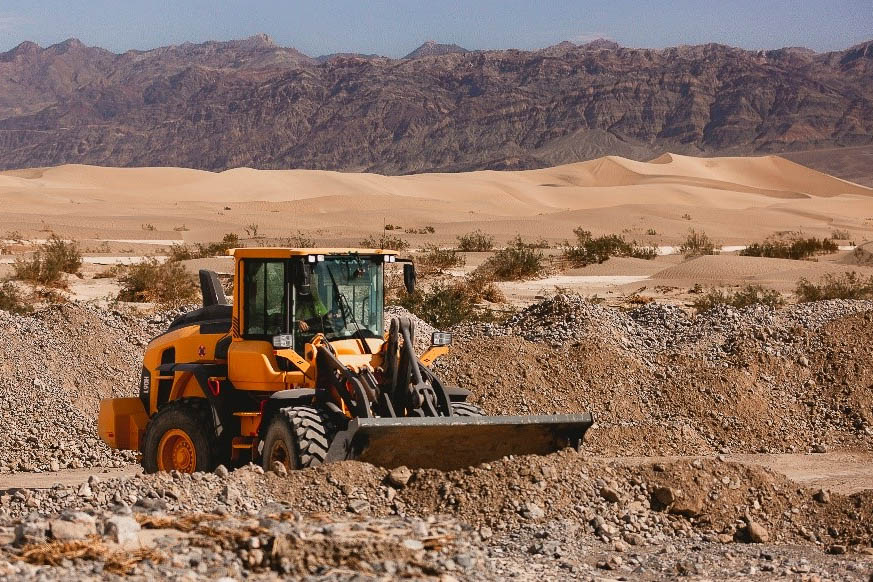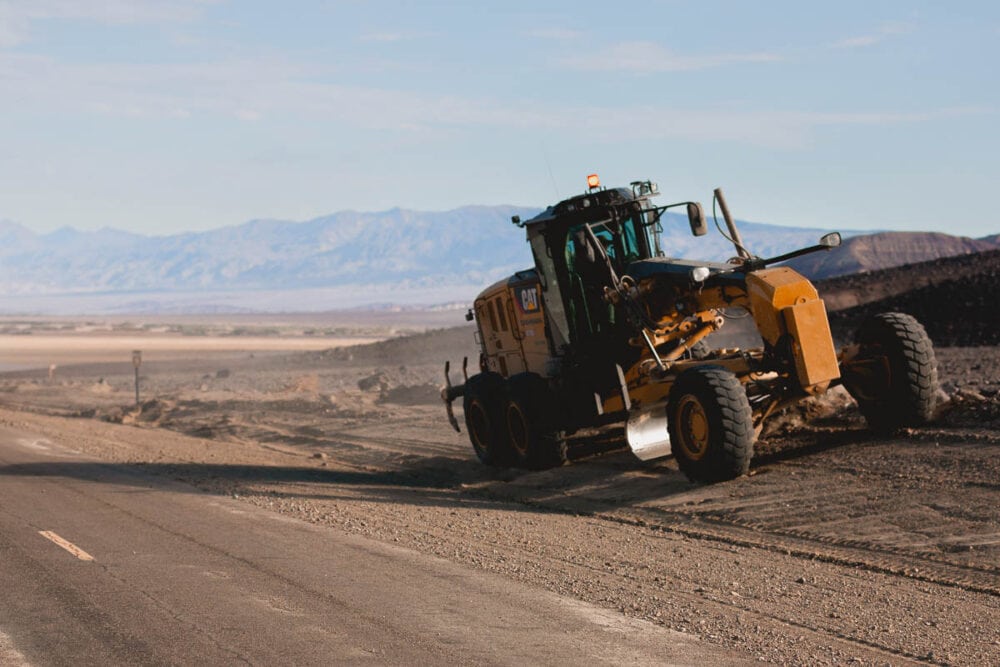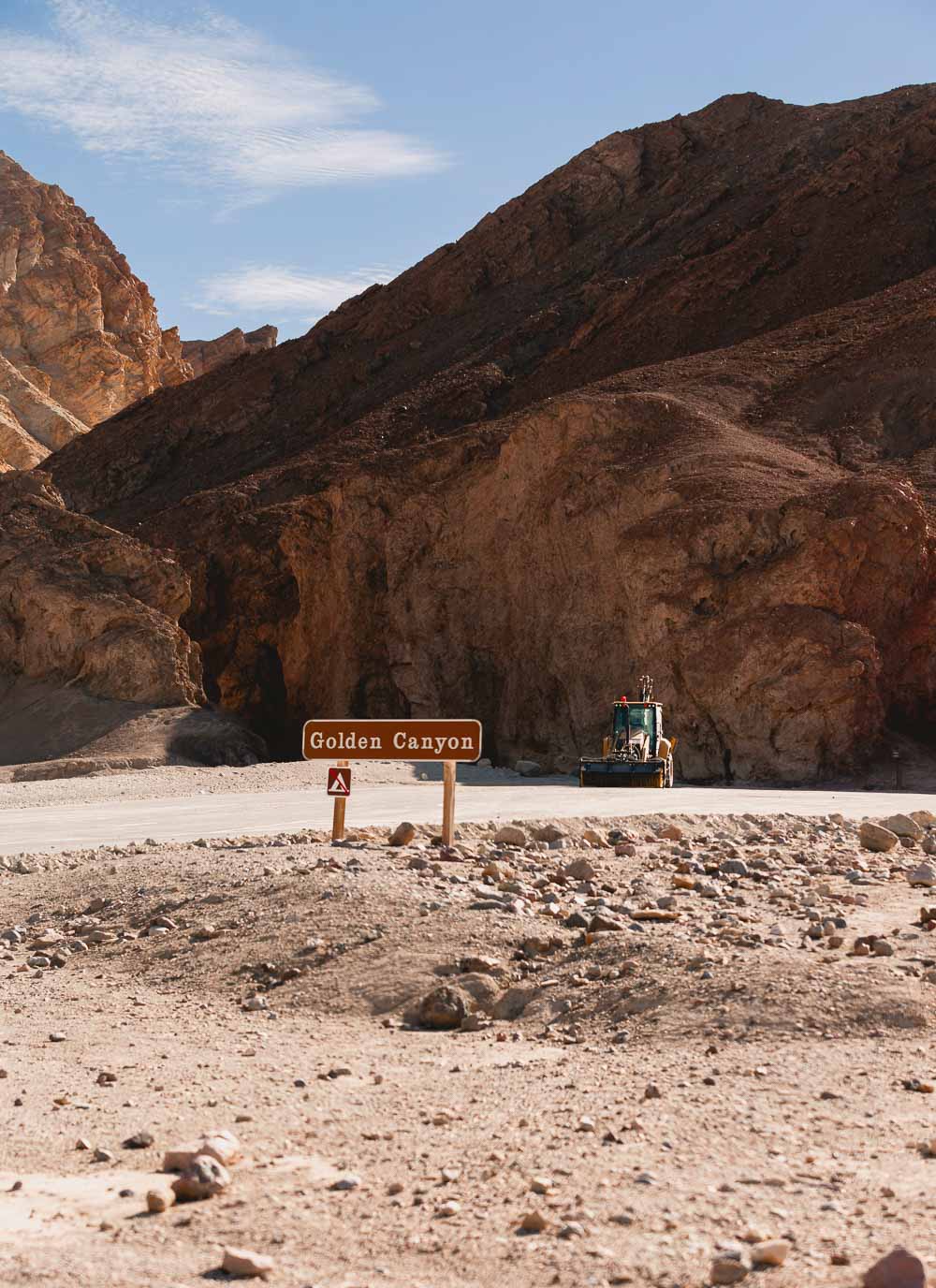This news story about the reopening of popular places in Death Valley National Park is based on an August 18, 2022, National Park Service press release. You can read the original release here.
UPDATE: New storms on August 16 and 18 caused additional debris flows on roads that were intended to open on August 20, Death Valley National Park management said. As a result, Badwater Road, all of Badwater Basin and Dante’s View will remain closed until “tomorrow [Saturday] afternoon, Sunday or even next week.”
Just two weeks after record-setting rainfall created a historic flood and caused millions of dollars in infrastructure damage, Death Valley National Park will reopen its most popular sites to the public on Saturday, August 20.
In early August, a 1,000-year flooding event immobilized cars, washed away roads and trapped approximately a thousand people in Death Valley. The flood was so severe that park management closed all of Death Valley National Park to visitors.
Now, the National Park Service announced that a number of roads will reopen, once again offering access to Death Valley National Park’s top attractions. Several roads, however, will remain closed until further notice.

Top Attractions in Death Valley National Park Will Reopen on Saturday, August 20
“We’re eager to welcome summer visitors back to Death Valley’s most popular sites, but at the same time, we want to caution folks that many roads in the park will remain closed for months during repair work,” said Mike Reynolds, Death Valley National Park superintendent.
Maintenance crews from the California Department of Transportation (Caltrans) have been working to reopen State Route 190, the main thoroughfare through the park.
The National Park Service (NPS) is responsible for most other roads within the park and has been working to clear them to make them safe for the public.
Reynolds expressed his gratitude for the hard work done by crew and partners, saying that he’s “thankful for our work crews and Caltrans partners who have worked tirelessly to reopen popular sites to visitors.”
“It’s an opportune time to visit the park and witness firsthand the dramatic impacts of a 1,000-year flood event,” he said.
All roads into and through the park were closed to the public on Friday, August 5, due to severe flooding. Death Valley National Park, which has approximately 1,400 miles of roads, including 200 miles of paved roadways, was affected by debris, shoulder road loss, undercutting, and pavement loss.
Workers assessed 600 miles of roads, and 200 miles are deemed impassable. Park officials say there are still 800 more miles of road left to assess.

Caltrans, NPS and Inyo County spent the last two weeks conducting damage assessments, making critical repairs, and clearing tons of debris and dirt from roadways.
Death Valley National Park is vast, the largest national park in the contiguous United States. At about 3.4 million acres, it is almost the size of Connecticut. Therefore, NPS officials advise when visitors return to the park, they should exercise extreme caution and respect closures.
Which Places Will Reopen to the Public in Death Valley National Park?
Visitors will only be able to access the park via State Route 190 and Panamint Valley Road.
All other paved roads including Badwater Road from CA-178, all access roads via NV-374 (Beatty Cutoff and Daylight Pass), and North Highway/Scotty’s Castle road will remain closed for repairs.
Many of the park’s most popular sites will reopen to visitors this weekend. This includes the following places:
- Furnace Creek Visitor Center
- Badwater Basin (open only from State Route 190 but closed south of Badwater at mile marker 17)
- Golden Canyon
- Artist Drive
- Devils Golf Course
- Natural Bridge
- Zabriskie Point and Dante’s View
- Mesquite Sand Dunes
- Twenty Mule Canyon
- Harmony Borax Works.
Other attractions will remain closed indefinitely and some park roads may remain closed for days to months, depending on the severity of the damage, NPS officials say.

Park Service Urges Death Valley Visitors to Exercise Caution
Motorists should also expect temporary delays and lower speed limits when traveling throughout the park. They may encounter one way traffic control stops and limited shoulder parking. They should also watch for loose gravel on the road that may impact windshields and tires.
Backcountry roads are still being assessed and the park does not have information about conditions in many areas. The public should be aware of hazardous conditions, including missing shoulders, steep drop-offs, and impassable areas on backcountry roads.
Backcountry travel in Death Valley National Park requires proper equipment (including a high-clearance vehicle and rugged, backcountry tires), careful planning, and experience with extreme heat and harsh desert conditions.
According to the National Weather Service, temperatures in Death Valley over the weekend are forecast to be around 115° F (46°C).
The NPS encourages park visitors to stay safe in the summer by not hiking at low elevations after 10 a.m., staying within a short walk of air conditioning, drinking plenty of water and eating salty snacks.
On August 15, the U.S. Department of Transportation’s Federal Highway Administration announced a release of $11.7 million in emergency federal funding to repair damaged roads. These funds will support recovery in both Death Valley and Mojave National Preserve.
This initial funding will help offset the substantial costs incurred during the first stages of what park rangers say is possibly the most widespread catastrophic event in the park’s history.
As officials continue to assess the damage, they predict that the recovery effort will not only be lengthy, but pricey as well with costs expected to rise by the tens of millions.
